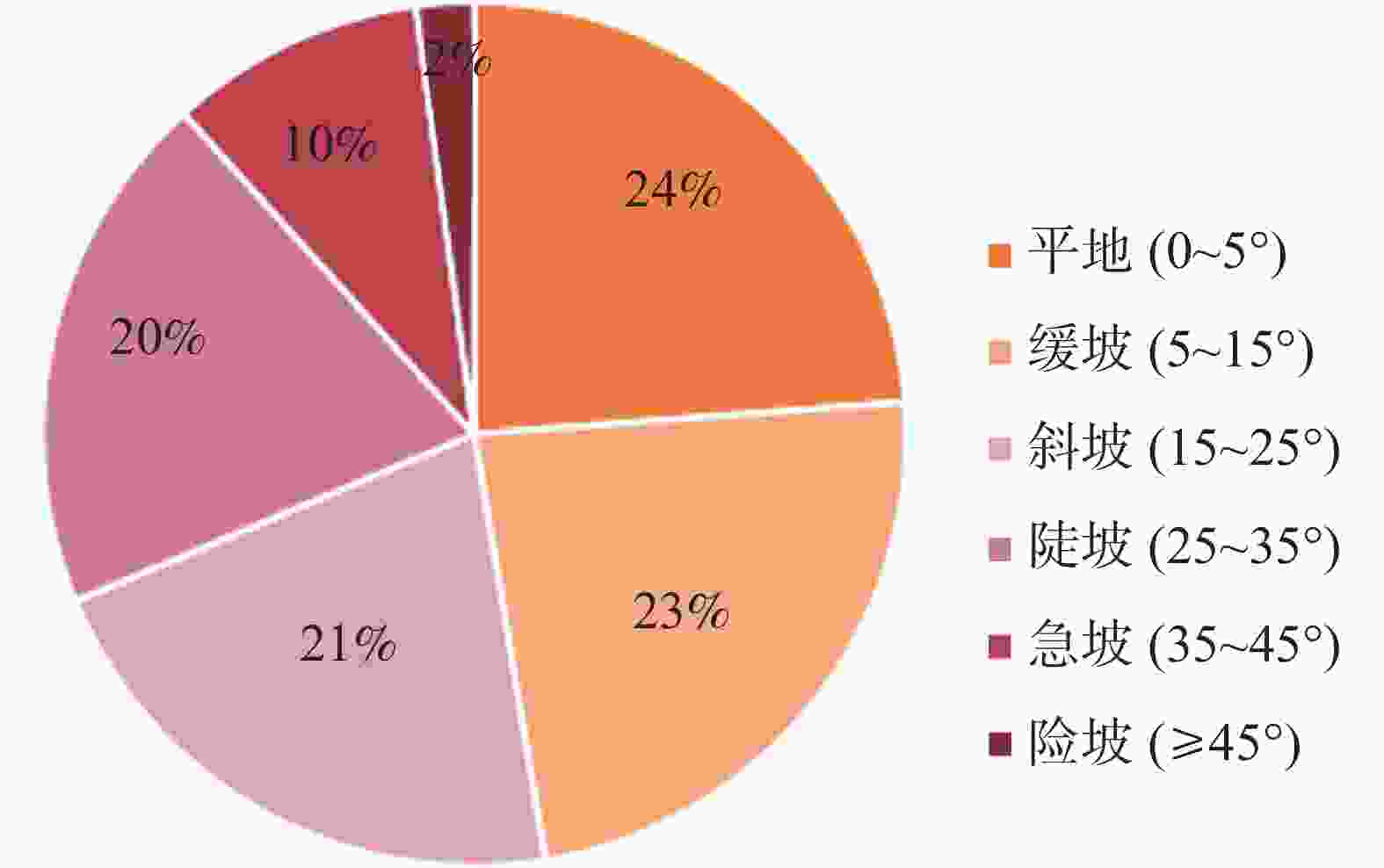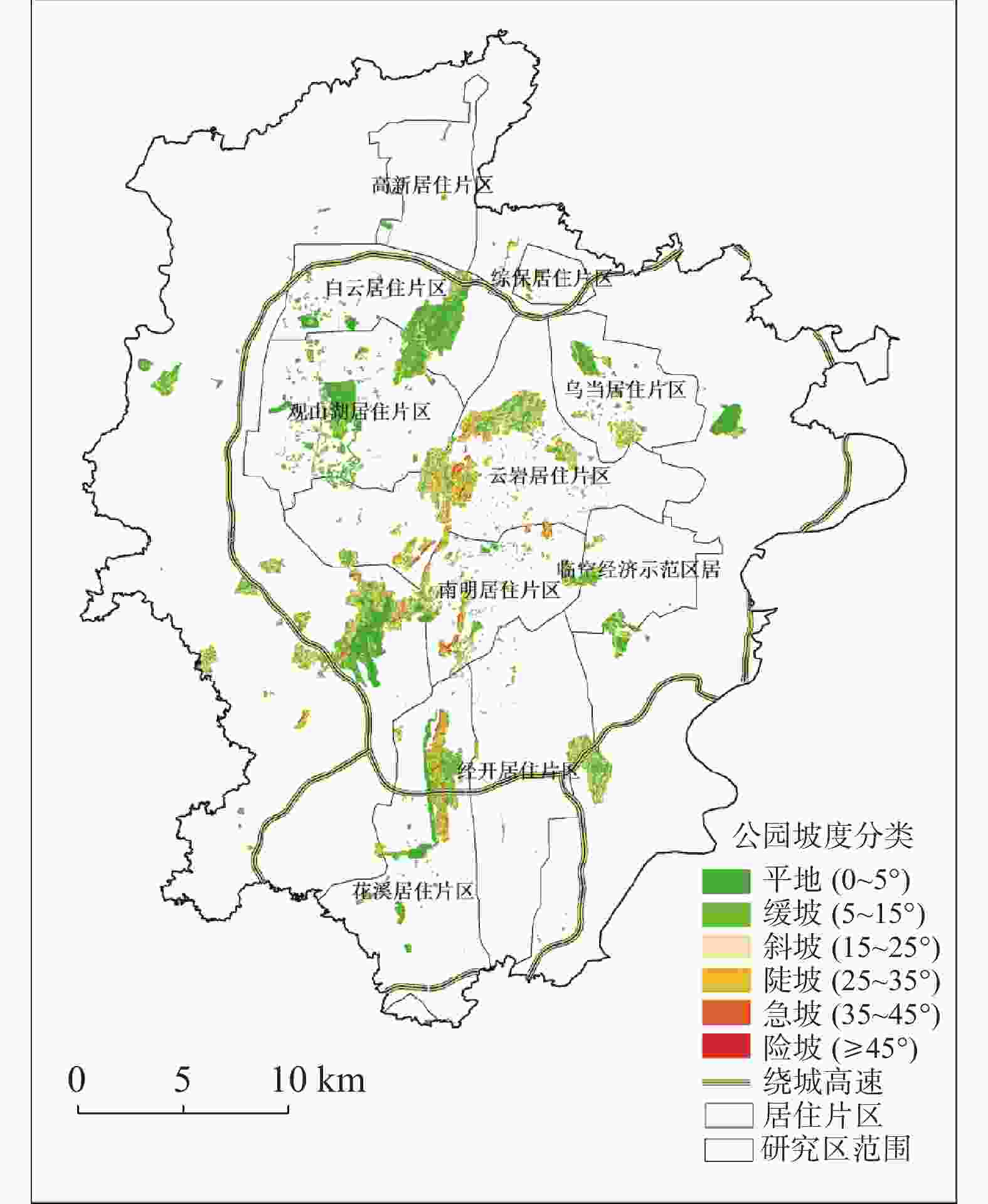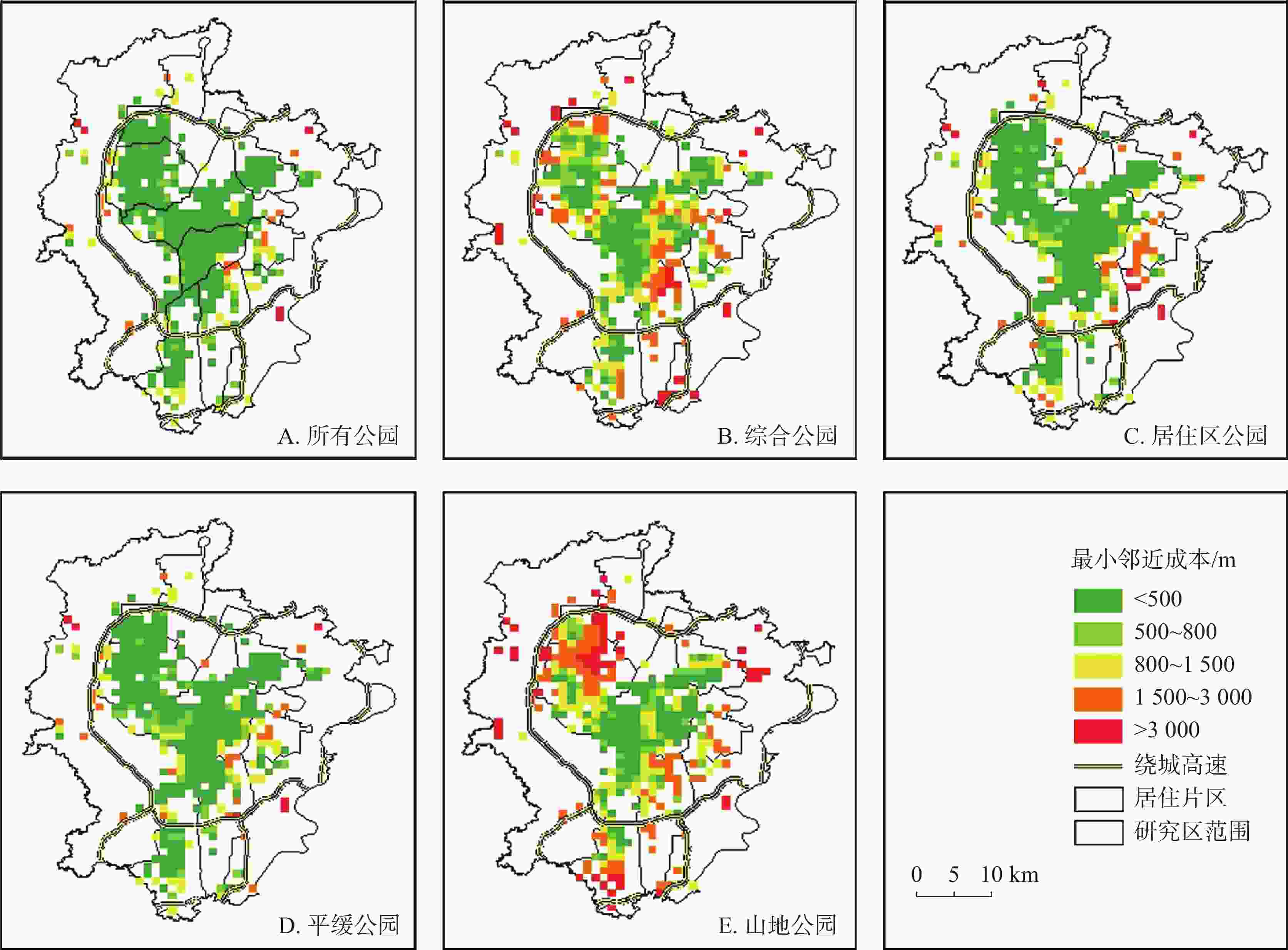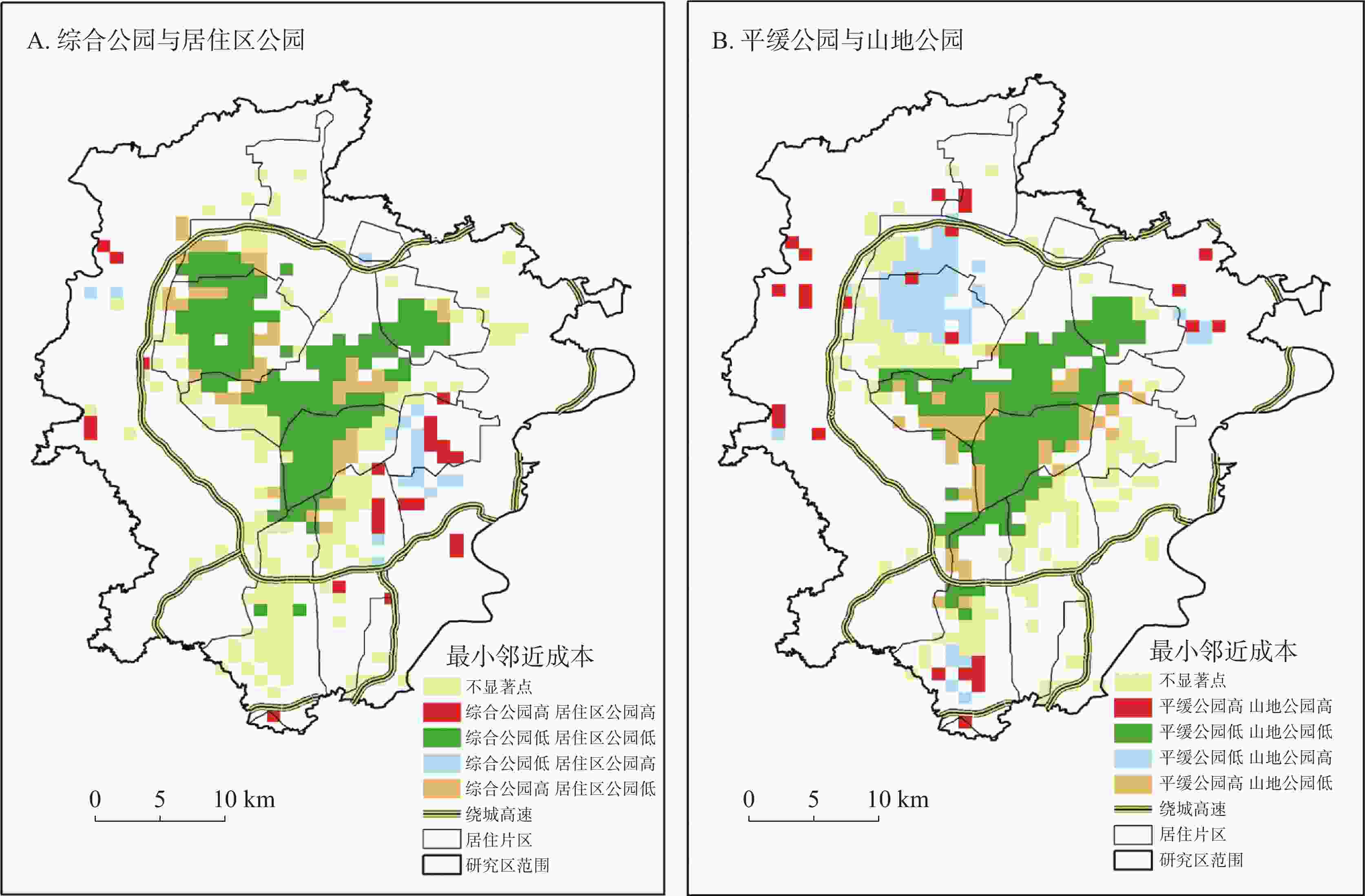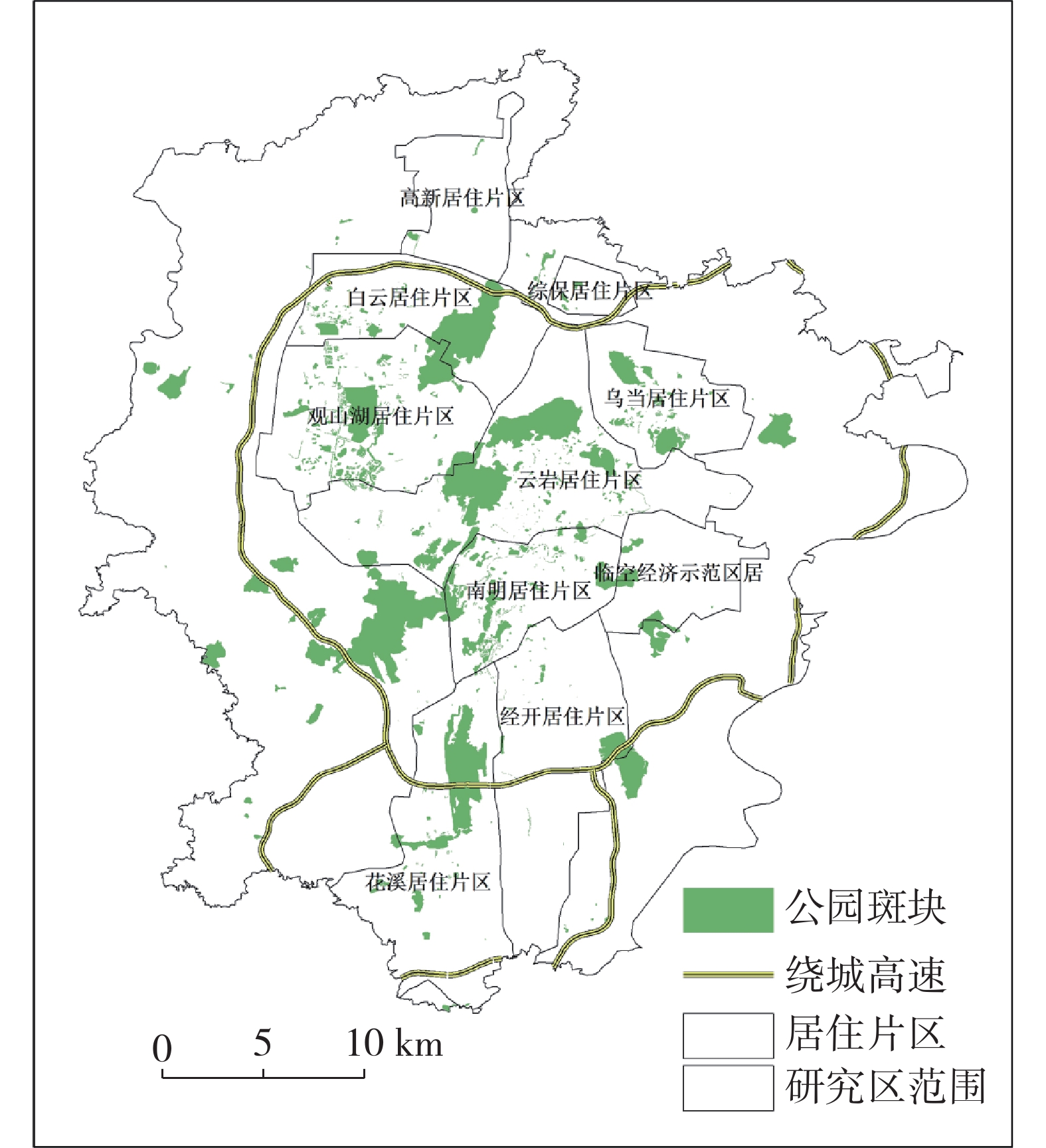Spatial accessibility analysis of urban parks in typical karst area based on minimum cost of proximity: A case study of Guiyang City
-
摘要: 以典型喀斯特城市贵阳市为例,分析地貌特征对于公园绿地供给能力的影响,采用最小邻近成本分析法和空间自相关分析,对贵阳市公园绿地的供给特征以及不同类别公园可达性空间差异进行评价,探讨喀斯特城市公园可达性的提升策略。结果表明:研究区城市公园供给总量较高,但公园斑块面积二元结构明显,且坡度15°以上面积占比53%;公园可达性整体较好,91.89%的居民小区到公园的最小邻近成本低于500 m,但不同类别城市公园可达性存在一定差异。因此,喀斯特山地城市要提升公园服务水平,首先应补足公园服务的盲区,尤其是建成区残存孤峰、小峰丛公园服务能力不足造成的隐性盲区;其次,在老旧城区公园建设需避免盲目求大,应着重提高服务质量与效率,并且发挥自然山体优势建设独具特色的公园服务体系;应结合人口分布特征和不同类别的公园配置状况,合理进行喀斯特山体公园化利用,避免生态环境破坏与公园空置。Abstract:
Urban parks are important to urban residents' physical and mental well-being, social harmony, and sustainable urban development. Constrained by landform features such as high mountains, steep slopes and inadequate flatlands, cities located in karst mountainous regions often face challenges of inadequate land available for construction, high population density in built-up areas, and small areas of park space per capita. With accelerated urbanization in recent years, some cities have built urban parks in natural karst hills as a means to increase both the quantity and quality of park service. However, some of these parks featured with tower karst or cluster-peaks are subject to limited tourist capacity and low-level barrier-free access and thus fail to meet visitors' basic need for recreation. Therefore, an appropriate design and layout of urban park system in a karst mountain city should be conducted based on such key elements as the size of park patch, the topography of the park site, and the features of population distribution in the city. With the principle of minimum cost of proximity, this study takes Guiyang, a typical karst mountain city, as an example and discusses strategies to improve urban park accessibility in karst mountain cities. In this study, we first set topographic coefficients. The percentage of park space with a gradient less than 15 degrees was determined to indicate the topography of the park. 923 urban parks in Guiyang were then categorized into "comprehensive parks" and "parks in residential areas" based on the sizes of the park patches. They were also classified into "parks with flat landform" and "montane parks" based on their topographic coefficients. Subsequently, with the principle of minimum cost of proximity, we measured the distances of 2,616 residential communities to their nearest and to other different types of parks. These distances were then used to assess the accessibility level of different park types. Thirdly, we conducted the spatial autocorrelation analysis to examine whether there would be spatial aggregation in various types of parks with different accessibility levels and what the pattern would be for their spatial distribution. In this study, we have made the following findings. Firstly, the total amount of urban parks in the study area is large, accounting for 7.54% of the study area and a per capita park area of 28.98 m2. Secondly, features of park patches are evidently dichotomous in terms of their areas. 93.17% of the parks cover an area smaller than 10 hectares, occupying 10.52% of the total park area, whereas 25 large-scale parks with an area larger than 50 hectares account for approximately 80%. Thirdly, the terrain of most parks is mountainous. 53% of the parks are located at a gradient larger than 15 degrees, and 6.73% of the parks in residential areas present a topographic coefficient below 0.6, some of these parks are completely built in tower karst or small cluster-peak areas where service capacity is limited. Fourthly, the accessibility of parks is generally good, with a good match between the park's service area and the population distribution. The minimum cost of 91.89% of the communities to a park is less than 500 meters. There are differences in the accessibility level of different park types, but within a certain distance, accessibility levels are still able to meet the varied needs for park services. For more than 80% of the residential communities, their minimum cost to a comprehensive or a montane park is less than 1,500 meters. Lastly, spatial distributions of various park types are relatively balanced in the central part of residential areas in Yunyan, Nanming, and Wudang. In the central part of Guanshanhu residential area, however, there are less montane parks. In addition, 10% of the residential blocks have high accessibility to montane parks but low accessibility to parks in flat areas. The fact that park service may not cover these blocks caused by karst landform results in residents' difficulties in accessing parks with large open space and high-level barrier-free paths in the vicinity. In order to improve park accessibility and service quality, the areas without the coverage of park services should firstly be provided with the services. Small parks should be built in small-scale residential areas scattered along the edge of the city. In the residential areas close to montane parks but far from parks with flat landform, parks can be built on small patches of smooth terrain. Secondly, the working focus should be placed on enhancing the quality and diversity of park services after satisfying the basic need for park services. In old urban areas where it is difficult to add large parks, efforts should be made to increase small park patches and the park service capacity per unit area. In the new urban development areas, considerations should be given to principles of proximity and quality in distributing different types of parks. Natural features of karst hills can be used to good advantages in building a unique park service system for karst cities. In addition, based on the features of population distribution and spatial patterns of park types in the city, park design in karst hills should proceed appropriately so as to avoid damage to the ecological environment and prevent parks from falling into disuse. -
表 1 研究区公园分类及特点
Table 1. Classification and features of the park patches
分类依据 分类标准 特点 综合公园 斑块面积 面积≥10 hm2 面积较大,配套设施与服务功能更完善,景观多样性与生物多样性水平更高 居住区公园 面积<10 hm2 面积较小,服务功能较单一,数量多,靠近居民区,便捷性更高 平缓公园 地形系数 地形系数≥0.6 地势较平缓,游人容量大,无障碍化水平高,能够满足居民基本的日常需求 山地公园 地形系数<0.6 山体比例大,活动空间少,游人容量低,无障碍化水平低,但可提供多样化与差异化的公园服务,可作为平缓公园的补充 表 2 研究区公园斑块面积分类统计
Table 2. Statistics of the park patches
类型 面积/hm2 个数及占比/% 面积及占比/% 综合公园 ≥50.0 25(2.7) 7 170.86(80.85) 20.0~50.0 12(1.3) 421.71(4.75) 10.0~20.0 26(2.81) 342.43(3.86) 总计 63(6.82) 7935.01(89.47) 居住区公园 社区公园 5.0~10.0 37(4) 257.44(2.9) 1.0~5.0 218(23.61) 457.15(5.15) 游园 0.4~1.0 222(24.05) 148.54(1.67) 0~0.4 383(41.49) 70.43(0.79) 总计 860(93.17) 933.58(10.52) 表 3 研究区公园地形系数统计表
Table 3. Statistics of Park Topographic Coefficient
公园类型 地形系数范围 个数及占比/% 总面积及占比/% 综合公园 0.8~1.0 23(36.5) 2 202.29(24.83) 0.6~0.8 7(11.11) 348.5(3.92) 0.4~0.6 17(26.98) 3 407.09(38.42) 0.2~0.4 9(14.28) 1 730.56(19.51) 0~0.2 7(11.11) 246.55(2.78) 居住区公园 0.8~1.0 755(87.79) 673.45(7.59) 0.6~0.8 47(5.46) 98.81(1.11) 0.4~0.6 27(3.13) 74.57(0.84) 0.2~0.4 21(2.44) 59.78(0.67) 0~0.2 10(1.16) 26.95(0.3) 表 4 居民小区到各类公园的最小邻近成本(个数及占比)
Table 4. Statistics of minimum cost to different kinds of parks
距离/m 0~500 500~800 800~1 500 1 500~3 000 >3 000 所有公园(占比/%) 2 404(91.89) 107(4.09) 75(28.66) 25(0.95) 5(0.19) 综合公园(占比/%) 942(36) 477(18.23) 780(29.81) 360(13.76) 57(2.17) 居住区公园(占比/%) 2 264(86.54) 168(6.42) 109(4.16) 62(2.37) 13(0.49) 平缓公园(占比/%) 2 261(86.42) 192(7.33) 116(4.34) 40(1.52) 7(0.26) 山地公园(占比/%) 997(38.11) 505(19.3) 695(26.56) 266(10.16) 153(5.84) -
[1] 屠星月, 黄甘霖, 邬建国. 城市绿地可达性和居民福祉关系研究综述[J]. 生态学报, 2019, 39(2):421-431.TU Xingyue, HUANG Ganlin, WU Jianguo. Review of the relationship between urban greenspace accessibility and human well-being[J]. Acta Ecologica Sinica, 2019, 39(2):421-431. [2] 斯特凡纳·托内拉, 黄春晓, 陈烨. 城市公共空间社会学[J]. 国际城市规划, 2009, 24(4):40-45.Tonnelat S, HUANG Chunxiao, CHEN Ye. The sociology of urban public spaces[J]. Urban Planning International, 2009, 24(4):40-45. [3] 杨丽娟, 杨培峰. 空间正义视角下的城市公园: 反思、修正、研究框架[J]. 城市发展研究, 2020, 27(2):38-45.YANG Lijuan, YANG Peifeng. Urban parks from the perspective of spatial justice: reflection, revision and research framework[J]. Urban Development Studies, 2020, 27(2):38-45. [4] 李平华, 陆玉麒. 可达性研究的回顾与展望[J]. 地理科学进展, 2005, 24(3):69-78. doi: 10.3969/j.issn.1007-6301.2005.03.009LI Pinghua, LU Yuqi. Review and prospectation of accessibility research[J]. Progress in Geography, 2005, 24(3):69-78. doi: 10.3969/j.issn.1007-6301.2005.03.009 [5] 刘常富, 李小马, 韩东. 城市公园可达性研究: 方法与关键问题[J]. 生态学报, 2010, 30(19):5381-5390.LIU Changfu, LI Xiaoma, HAN Dong. Accessibility analysis of urban parks: Methods and key issues[J]. Acta Ecologica Sinica, 2010, 30(19):5381-5390. [6] 李博, 宋云, 俞孔坚. 城市公园绿地规划中的可达性指标评价方法[J]. 北京大学学报(自然科学版), 2008(4):618-624LI Bo, SONG Yun, YU Kongjian. Evaluation method for measurement of accessibility in urban public green space planning[J]. Acta Scientiarum Naturalium Universitatis Pekinensis, 2008(4):618-624 [7] 许泽宁, 高晓路, 王志强, 马妍, 邓羽, 龙瀛. 中国地级以上城市公园绿地服务水平评估: 数据、模型和方法[J]. 地理研究, 2019, 38(5):1016-1029. doi: 10.11821/dlyj020170683XU Zening, GAO Xiaolu, WANG Zhiqiang, MA Yan, DENG Yu, LONG Ying. Evaluation of the service of parks in Chinese urban areas[J]. Geographical Research, 2019, 38(5):1016-1029. doi: 10.11821/dlyj020170683 [8] 宋岑岑. 基于可达性的公园绿地服务公平性研究[D]. 武汉: 武汉大学, 2018.SONG Cencen. Research on the fairness of the green space service based on accessibility: A case study of main urban area in Wuhan[D]. Wuhan: Wuhan University, 2018. [9] 张远, 王志泰. 岩溶地区山地城市山体绿地资源公园化利用初探: 以黔中城市为例[J]. 山地农业生物学报, 2016, 35(4):30-35.ZHANG Yuan, WANG Zhitai. Preliminary discussion on the utilization of the mountain parks of green space resources in the mountainous cities in the karst region of central Guizhou Province[J]. Journal of Mountain Agriculture and Biology, 2016, 35(4):30-35. [10] 张瑾珲. 黔中地区喀斯特山体公园游人容量研究[D]. 贵阳: 贵州大学, 2019.ZHANG Jinhui. Research of tourist capacity of karst hill parks in central Guizhou Region[D]. Guiyang: Guizhou University, 2019. [11] 高红艳, 刁承泰. 试论喀斯特地貌对城市发展建设的影响: 以喀斯特山区城市贵阳为例[J]. 中国岩溶, 2010, 29(1):81-86. doi: 10.3969/j.issn.1001-4810.2010.01.014GAO Hongyan, DIAO Chengtai. Discussion on the impact of karst topography to urban development: A case in Guiyang City[J]. Carsologica Sinica, 2010, 29(1):81-86. doi: 10.3969/j.issn.1001-4810.2010.01.014 [12] 冯源嵩, 杨庆媛. 喀斯特山地城市新区生态用地保护与开发案例研究: 以金阳新区为例[J]. 中国岩溶, 2013, 32(4):453-461.FENG Yuansong, YANG Qingyuan. Ecologic land protection and development of new urban district in karst mountain: A case study in the Jinyang new district[J]. Carsologica Sinica, 2013, 32(4):453-461. [13] 周月婷. 山体公园规划设计规范体系研究[D]. 贵阳: 贵州大学, 2016.ZHOU Yueting. Study on planning and design standard system of mountain park[D]. Guiyang: Guizhou University, 2016. [14] 殷艳, 王志泰. 山地城市山体绿地资源保护与公园化利用初探[J]. 绿色科技, 2017(17):19-24. doi: 10.16663/j.cnki.lskj.2017.17.008YIN Yan, WANG Zhitai. A Preliminary study on the protection of mountainous green space resources and the utilization of parks in mountainous cities[J]. Journal of Green Science and Technology, 2017(17):19-24. doi: 10.16663/j.cnki.lskj.2017.17.008 [15] 董晓超, 熊康宁, 朱大运, 蓝家程, 廖建军, 曹洋, 刘兴宜. 喀斯特生态环境风险评价: 以贵州省为例[J]. 中国岩溶, 2019, 38(5):713-721.DONG Xiaocao, XIONG Kangning, ZHU Dayun, LAN Jiacheng, LIAO Jianjun, CAO Yang, LIU Xingyi. Risk assessment of karst ecological environments: A case study of Guizhou Province[J]. Carsologica Sinica, 2019, 38(5):713-721. [16] 李雪冬, 杨广斌, 周越, 李冰, 张旭亚. 基于3S技术的岩溶地区城市景观生态安全评价: 以贵阳市为例[J]. 中国岩溶, 2016, 35(3):340-348. doi: 10.11932/karst20160313LI Xuedong, YANG Guangbin, ZHOU Yue, LI Bing, ZHANG Xuya. Evaluation of urban landscape ecological security in karst areas based on 3S technologies: An example of Guiyang City[J]. Carsologica Sinica, 2016, 35(3):340-348. doi: 10.11932/karst20160313 [17] 禹艺娜, 王中美. 基于GIS和AHP的贵阳市环城林带生态敏感性评价[J]. 中国岩溶, 2017, 36(3):359-367. doi: 10.11932/karst20170310YU Yina, WANG Zhongmei. Evaluation of ecological sensitivity in the city-encircling forest belt of Guiyang based on GIS and AHP[J]. Carsologica Sinica, 2017, 36(3):359-367. doi: 10.11932/karst20170310 [18] 汤娜, 王志泰. 黔中城市喀斯特山体遗存植物群落公园化利用响应[J]. 生态学报, 2021, 41(8):3033-3052.TANG Na, WANG Zhitai. Response of park utilization of karst mountain community in Guiyang, a middle Guizhou city[J]. Acta Ecologica Sinica, 2021, 41(8):3033-3052. [19] 李文静, 杨柳. GIS在风景区用地适宜性评价的应用: 以威海市圣水观风景区为例[J]. 现代园艺, 2017(19):130-131.LI Wenjing, YANG Liu. Application of GIS in land suitability evaluation in scenic area: A case study of Shengshuiguan in Weihai[J]. Modern Horticulture, 2017(19):130-131. [20] 王振波, 方创琳, 许光, 潘月鹏. 2014年中国城市PM(2.5)浓度的时空变化规律[J]. 地理学报, 2015, 70(11):1720-1734. doi: 10.11821/dlxb201511003WANG Zhenbo, FANG Chuanglin, XU Guang, PAN Yuepeng. Spatial-temporal characteristics of the PM2.5 in China in 2014[J]. Acta Geographica Sinica, 2015, 70(11):1720-1734. doi: 10.11821/dlxb201511003 -




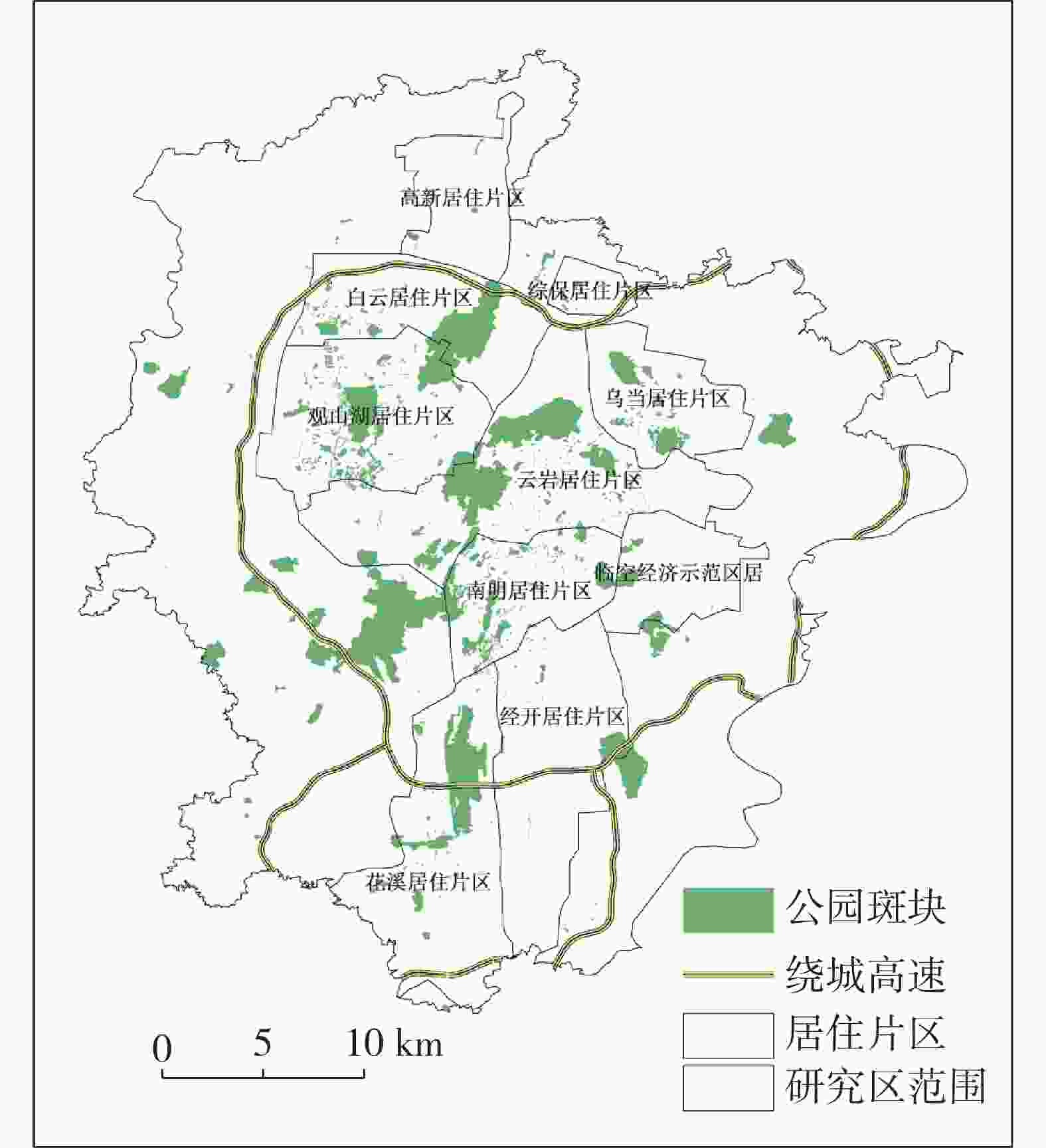
 下载:
下载:
